Introduction
Embarking on a journey to remove a tattoo involves understanding the process and potential outcomes. This comprehensive guide on “Tattoo Removal Before & After” will shed light on the process, expectations, and frequently asked questions. Whether you’re considering tattoo removal or just curious about the results, this guide will provide you with valuable insights.
What is Tattoo Removal?
Tattoo removal is a procedure or set of techniques used to erase or fade a tattoo from the skin. It’s done when a person wants to get rid of a tattoo for personal, aesthetic, or professional reasons. The process involves using different methods to break down the tattoo ink in the skin so that the body’s immune system can eliminate it over time. Some common methods include laser removal, surgical removal, and chemical treatments. Each method has its own advantages and considerations, and the choice of method depends on factors like the size, color, and age of the tattoo, as well as the individual’s skin type and preferences.
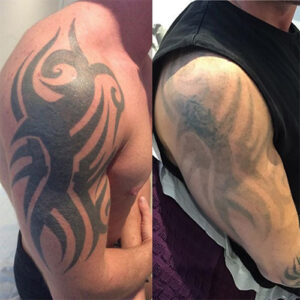
Tattoo Removal Before & After: What to Expect
Tattoo removal results can vary due to multiple factors, including:
- Before Removal: The tattoo is visible, and its appearance may vary based on factors like ink color and skin type.
- After Removal: The tattoo will fade progressively with each session, eventually becoming significantly lighter or completely disappearing.
How does tattoo removal work?
Tattoo removal works by using various methods to break down and remove the ink particles that make up the tattoo in the skin. Here are the primary methods and how they work:
Laser Tattoo Removal
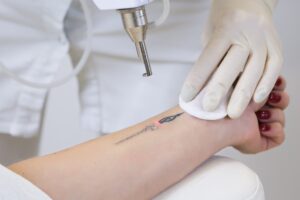
- Laser devices emit specific wavelengths of light that target the tattoo ink.
- The ink absorbs the laser energy, causing it to fragment into smaller particles.
- The immune system recognizes these smaller ink particles as foreign and gradually flushes them out of the body.
- It usually takes multiple sessions, spaced weeks apart, to achieve the desired fading or complete removal.
Surgical Tattoo Removal
- A surgical procedure involves cutting out the tattooed skin using a scalpel.
- The remaining skin is then stitched back together to close the wound.
- Surgical removal is typically used for smaller tattoos and may result in scarring.
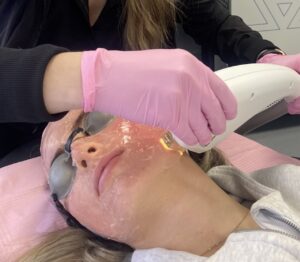
Intense Pulsed Light (IPL) Therapy
- IPL devices emit a broad spectrum of light, targeting various colors in the tattoo.
- The light energy is absorbed by the ink, breaking it down into smaller particles.
- The body’s immune system works to eliminate these smaller ink particles over time.
Dermabrasion
- Dermabrasion uses a high-speed, rotating brush or diamond wheel to remove the top layers of skin, including the tattooed area.
- This process helps fade the tattoo by removing the skin layers containing the ink.
Chemical Tattoo Removal
- Chemical solutions, often containing acids or saline, are applied to the tattooed area.
- These solutions break down the ink, allowing the body to gradually absorb and eliminate the ink particles.
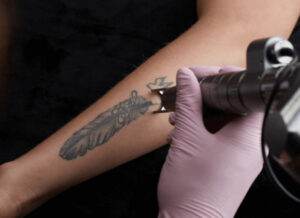
Microneedling
- Fine needles create controlled micro-injuries in the tattooed skin.
- The body’s healing response gradually breaks down the tattoo ink, and it is then eliminated through natural processes.
Tattoo Removal Cream
Tattoo removal creams, while an option, are not as effective as other tattoo removal methods. These creams can be applied at home by rubbing them onto the unwanted tattooed area. Typically, they contain acids that may potentially irritate or harm the skin. The process of tattoo fading with these creams is gradual, often requiring several months of consistent use before any noticeable results can be seen.
In all methods, the goal is to break down the tattoo ink into smaller fragments, making it easier for the body’s immune system to clear them. The effectiveness of each method depends on various factors such as the tattoo’s size, color, depth, and the individual’s skin type. Multiple sessions and proper aftercare are essential for successful tattoo removal. Always consult a qualified professional to determine the most suitable method for your specific tattoo.
Understanding Tattoo Removal Before & After
Tattoo removal is a process that involves various techniques to fade or eliminate a tattoo. The outcome largely depends on factors such as the size, color, and age of the tattoo, as well as the individual’s skin type. Here, we delve into what you should know about tattoo removal before and after:
Factors Affecting Tattoo Removal Outcomes
- Tattoo Size and Complexity: Larger or intricate tattoos may require more sessions for complete removal.
- Ink Color: Some colors are more stubborn to remove than others.
- Skin Tone: Lighter skin tones typically respond better to removal treatments.
- Tattoo Age: Older tattoos tend to fade more easily compared to newer ones.
In your journey through tattoo removal, understanding these factors is crucial to manage expectations and plan accordingly.
The Tattoo Removal Process
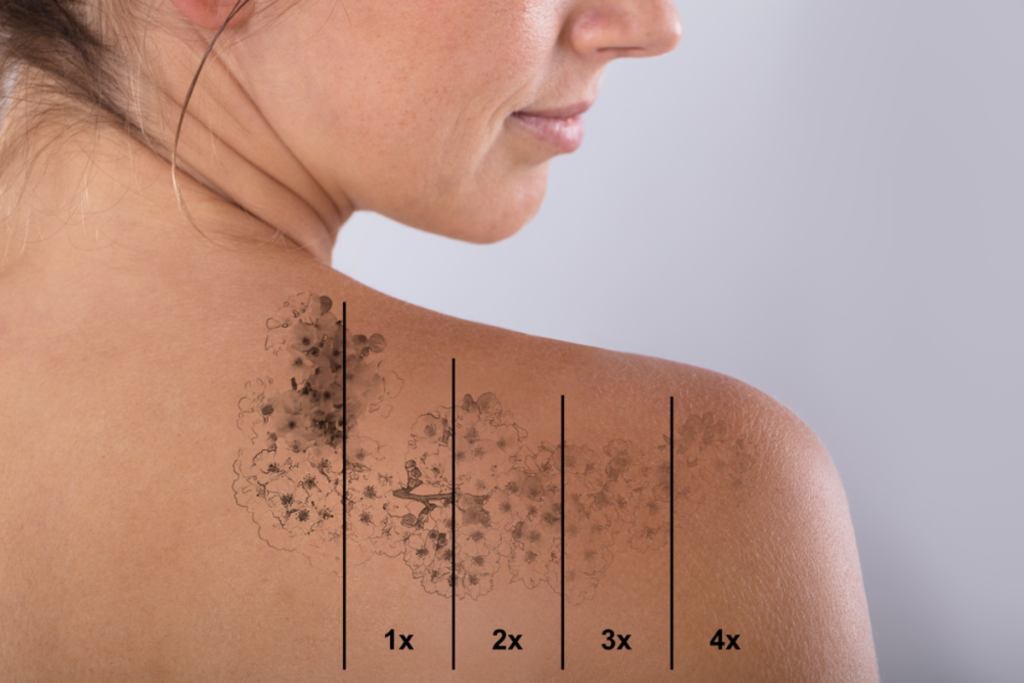
Preparing for the Procedure
- Before the removal process, consult with a dermatologist or a specialist to discuss your expectations and potential outcomes.
- Understand the specific tattoo removal technique that will be employed, be it laser removal, excision, or other methods.
During the Procedure
- Depending on the method, you might experience slight discomfort, but the process is generally tolerable.
- Laser removal works by breaking down the tattoo ink, allowing the body to gradually eliminate it.
After the Procedure
- Post-treatment, follow the prescribed aftercare to ensure optimal healing and minimize complications.
- Tattoo fading will occur gradually, and multiple sessions might be needed for complete removal.
Who is a candidate for tattoo removal?
- Changed Preferences: People who no longer like their tattoo due to changing tastes or preferences.
- Job Requirements: Individuals whose jobs don’t permit visible tattoos, leading them to opt for removal.
- Faded or Altered Tattoos: Those with tattoos that have lost clarity over time or were poorly done.
- Life Changes: Individuals going through major life events like breakups or life milestones, prompting a desire to remove tattoos linked to past experiences.
- Health Concerns: People facing skin reactions or allergies to tattoo ink, necessitating removal for health reasons.
- Tattoo Mistakes: Individuals with tattoos that didn’t turn out as intended, prompting a wish to erase or correct them.
- Career Aspirations: Those aspiring for careers like the military or law enforcement, where visible tattoos may not be allowed.
- Modification Plans: People planning to modify an existing tattoo, needing a clean canvas for the changes.
- Correction Needs: Individuals needing corrections if initial tattoo removal attempts didn’t provide the desired outcome.
Let’s see some Tattoo Removal Before & After picture
Face tattoo removal before & after

Hand tattoo removal before & after
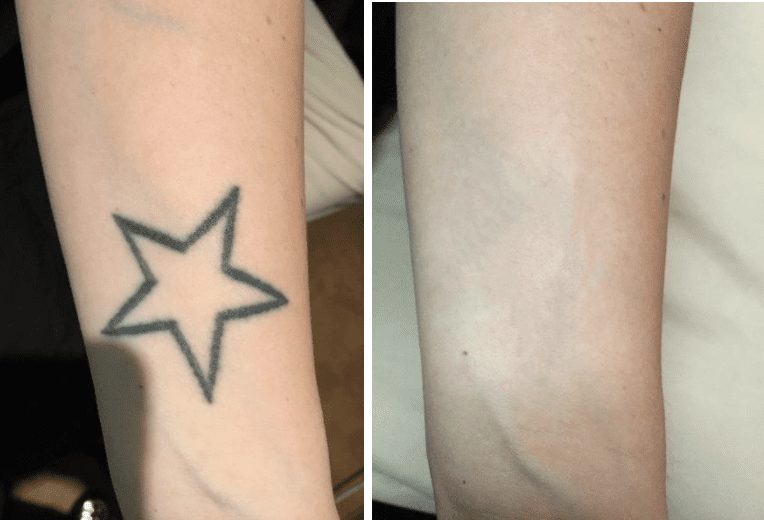
Finger tattoo removal before & after
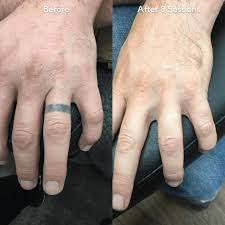
Neck tattoo removal before & after
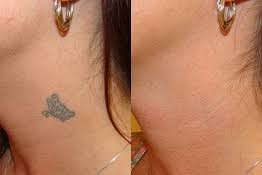
Ribs tattoo removal before & after
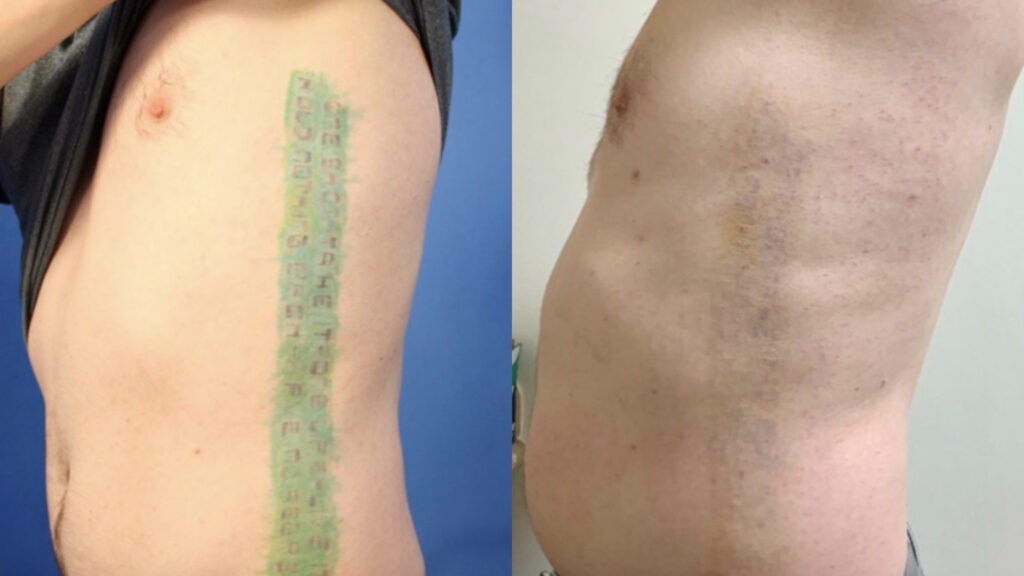
Lowerbody’s tattoo removal before & after
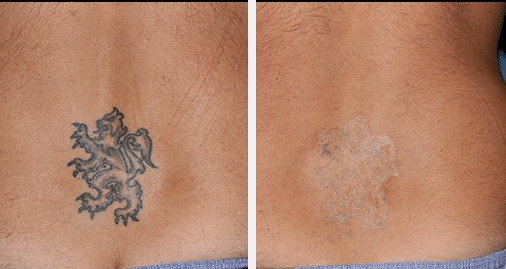
Shoulder tattoo removal before & after
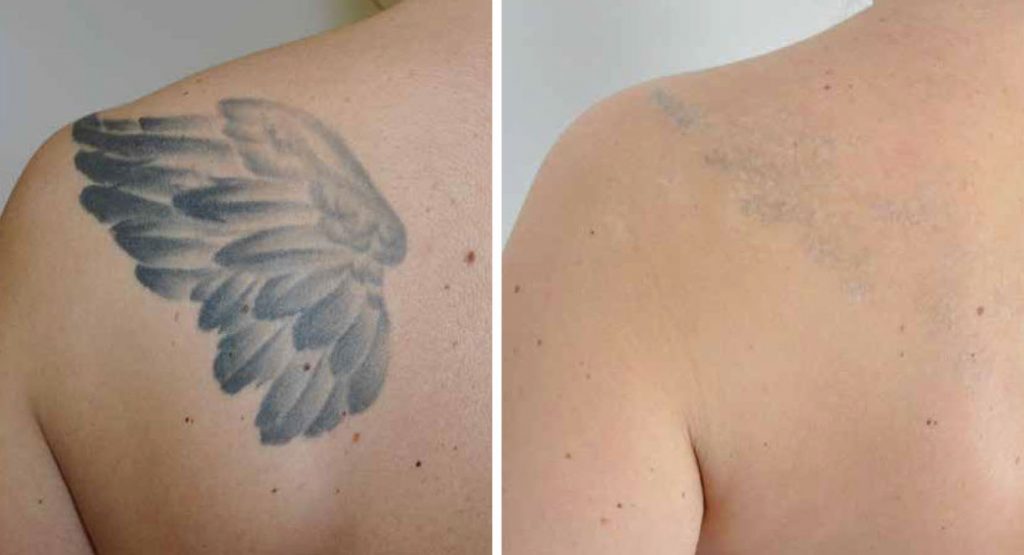
Leg tattoo removal before & after

Spinal cord tattoo removal before & after
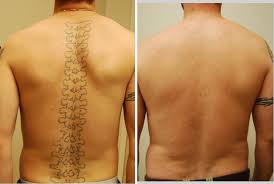
FAQs (Frequently Asked Questions)
What is the typical duration between tattoo removal sessions?
Tattoo removal sessions are usually spaced 4 to 8 weeks apart, allowing the skin to heal and the body to eliminate ink particles effectively.
Is tattoo removal painful?
While discomfort is common during the procedure, modern techniques minimize pain. Most people tolerate the procedure well.
Can all tattoos be completely removed?
Complete removal is possible, but it may not be guaranteed for every tattoo. Factors like ink color and skin type influence the outcome.
Are there any risks associated with tattoo removal?
Risks include temporary skin discoloration, scarring, and infection. However, these risks are minimized with proper technique and aftercare.
Can I get a new tattoo in the same spot after removal?
Yes, once the skin has fully healed from the removal process, you can opt for a new tattoo in the same spot if desired.
Conclusion
Tattoo removal is a journey that involves patience and understanding. Knowing what to expect before, during, and after the procedure empowers you to make informed decisions. If you’re considering tattoo removal, consult a professional to discuss the best approach for your unique situation.
